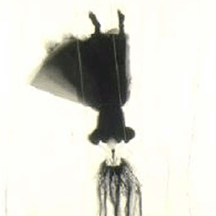I don't really care about the historical reality of St. Patrick's Day. I mean it isn't like Christmas is on solid ground in that regard. I also think it is interesting that there are cultural traditions that are celebrated in America that are far more important here than they are in the home countries -- like St. Patrick's Day or Cinco de Mayo.
What gets me is that for most dunderheads the way one celebrates the Irish is by getting drunk. Now, don't get me wrong. The Irish themselves have a long tradition of celebrating drinking. Fair enough. If you can drink and rattle off a good story or song and carry on with the poetry and wit of the Irish then you are indeed celebrating the spirit of the olde country. But just going out and getting blasted until you barf is, among other things, not about how the Irish drink but about how drunks drink.
I'm not the first to point out that this is the one cultural stereotype for which there is no cultural taboo -- indeed it is celebrated and encouraged by "Irish Americans" themselves. As to who is Irish-American, that is another matter. The largest and most ethnically cohesive group are the Irish Americans whose ancestors went through Ellis Island and who continue to live in the generally Irish neighborhoods of New York, Boston and Chicago. They are also connected to the older Irish Americans who came over during the famine as well as those who came over later, after Ellis Island closed. Those groups have also dispersed and how much someone continues to identify with being "Irish American" depends upon a variety of factors including, family, job, and where one lives.
On St. Patrick's Day everyone with an Irish name is Irish. I don't know the percentage of Americans with Irish surnames but it is certainly a very high percentage. My own name is Irish, from an ancestor who came over during the famine. The fact is, I am an American mongrel from half a dozen different nations and technically I am as much Cherokee as I am Irish (one sixteenth for what it's worth) but that is another topic.
On St. Patrick's Day everyone who is drinking is Irish. It was my Irish (and English) grandfather who was the alcoholic. You don't have to be Irish to be an alcoholic, but it helps, so the joke goes. (There are other ethnicities for which this could be said but we wouldn't consider the joke very funny, would we?)
There is so much more to the Irish, of course. Oh, like, Beckett, Joyce, Wilde, Shaw, Yeats, Synge, just to start with the modernists . . . which is where I tend to start and then I never really leave.
However, I'll start today with the Book of Kells because of the rather profane reason that I have some items in my shop with images from it. Here are a couple of places for sources of information. Frankly the web is a little thin on resources for the BoK. That said, I think the history of printing link is quite nice. I will add a reading list later. A couple of brief descriptions of the Book of Kells are provided below and at the bottom I have added a few images of items for sale at my shop.
Created around 800A.D., the Book of Kells has been in the possession of Trinity College since 1661.
In the Middle Ages, it was the Church that carried the torch of learning as well as the propagation of the faith. Irish monastics, living disciplined lives of obedience, work, and frugality, were also missionaries whose influence was felt throughout western Europe. They carried pocket books of the gospel for use in their work. But the Book of Kells was not a work for day-to-day use; it is thought to have been altar furniture used for special occasions. Scribes (who held high status within the ranks of the monks) painstakingly copied, in Latin, the four gospels of the life of Christ, with quill pens on vellum - stretched calfskin. (It is estimated that 185 calves' skins were used for the Book of Kells.) Beyond the handsome calligraphy, though, it is the embellishment and illustration of the book in brilliant colors that transforms it into a masterpiece of medieval art. The glowing colors were achieved with an astonishing range of pigments, from crushed oak apples to lapis lazuli to beetles' wings. Complex imagery with multiple symbolic meanings includes peacocks, snakes, animals, spirals and triskeles, and, of course, crosses of various styles. Images of saints are used, some rendered with great style and draftsmanship. Together these elements achieve both an immediacy and a sense of mystery; scholarly research will doubtlessly continue to interpret and reinterpret the work endlessly. Source: Trinity College Library
Mystical Testimony to Early Irish Christendom
Irish monks, once the storms of the mass migrations had quietened down, took to spread the Christian faith all over Europe by their dedicated mission during the 5th, 6th and 7th centuries. The age-old Irish-Celtic culture began to fuse with the impressions gathered by the monks during their extended dangerous travels. At that time, also called The Time of Scholars and Saints, the Irish monasteries were influential cultural and spiritual centres of Europe. At the height of Irish monasticism its most precious work was created, the Book of Kells.
A Masterpiece Created 1200 Years Ago
The Book of Kells is thought to be the work of a number of unknown genius-artists living in the monastery Iona around the year 800. It is first mentioned in an account of the theft in a church in 1007 which describes it as "the great gospel of Columcille, the holiest relic in the Western world". Soon after that the manuscript was found buried at Kells. And it would remain there until, during the reign of Cromwell, it was brought to Dublin for safety reasons. Around 1661 Henry Jones, bishop of Meath, donated it to the library of Trinity College where it is kept to this day.
The Pinnacle of Early Medieval Bookmaking
There are very few other works which express a similar symbolic power and magical radiation as this magnificent Gospel Book. Its mysticism lies in its rich and complex decoration. The impression of the holiness of the text is enhanced by its decorative apparatus which seems truly supernatural. Analysts examining the style of the decorative elements used in the Book of Kells have come to ascribe it to an artistic tradition which is also found in other works of art of the same period. However, too little information survives to exactly localise and date the manuscript according to its geographical or historical background.
Letters Evolve into Pictures and Pictures into Letters
The Book of Kells contains mainly the Four Gospels. However, other texts were also included in the book; at the beginning of the book, the canonical tables which contain the concordance compiled by Eusebius of Caesarea, and a number of property deeds relating to the monastery of Kells. The Latin text is written in proud insular semi-uncial, which like its magnificent illuminations, marks a highlight of Irish art creation. The Book of Kells must have been made in a scriptorium which knew even the most sophisticated tricks of the trade in manuscript production, as only the most profound technical know-how combined with excellent knowledge on contemporary and historic art could create such a wealth of symbolic and mystical illustrations.
Unique Wealth of Ornaments and Colour
The Book of Kells contains diverse miniatures of the Early Middle Ages which count among the most beautiful ever made. All, except two, pages of the manuscript are decorated with a truly unbelievable wealth of symbolic and mystical paintings. The manuscript fascinates not only by the great number but also by the sheer size of its vellum pages, measuring 33 x 25 cm on average. It was neither intended for daily use nor for study purposes but rather considered as a sacred work to represent the Word of God on the altar on high holidays of the Christian year. The book contains the Four Gospels as the most sacred texts of Christendom, and also a number of amusing quotes. One of them shows a mouse, having stolen a consecrated wafer, which is chased by a cat across the page (fol. 48r). In the Bible verse "No one can serve two masters", the initial letter of the Latin word N(emo) (no one) is composed of two male figures pulling each other's beard. Source: Finn's Books
shameless commerce: more items from the kora in hell shop:
There are t-shirts, a beer stein, buttons, magnets, sweatshirts, & more. Check the main shop to see what else is there.












No comments:
Post a Comment